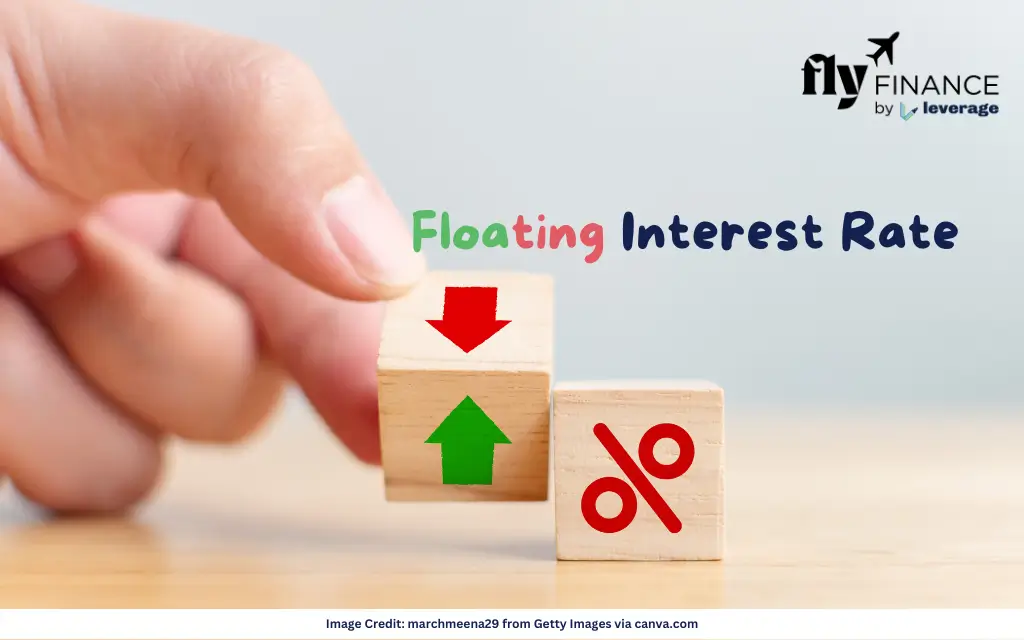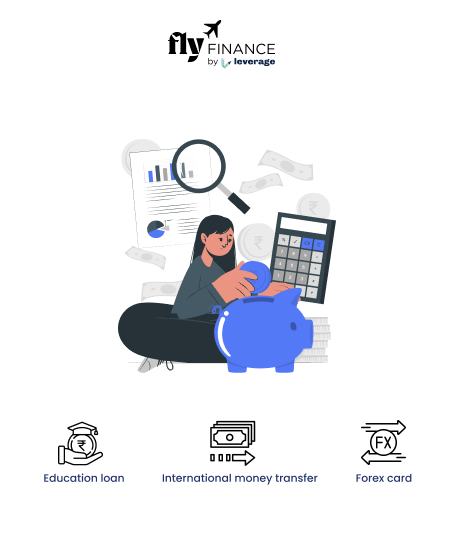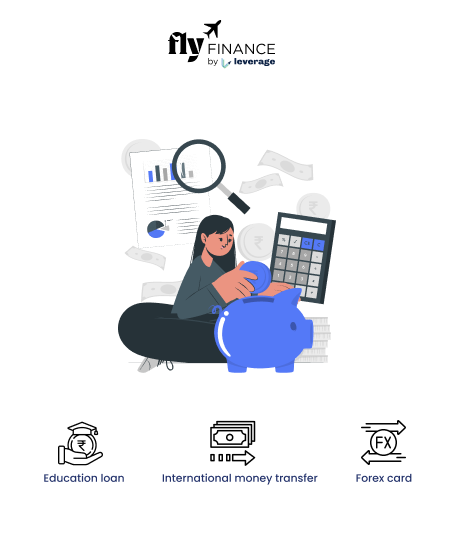When exploring student loan floating interest rates, borrowers face a critical choice between fixed and floating interest rates for student loans. A floating interest rate, also called a variable or adjustable rate, fluctuates with market conditions, offering potential savings when rates drop but risks when rates rise.
But what is a student loan floating interest rate, how does it work, and is it the right choice for you? This guide dives into student loan floating interest rates, explaining how they work, their pros and cons, and tips for managing them effectively to optimize your student loan repayment strategy.
Table of contents
- What Are Student Loan Floating Interest Rates?
- How Do Student Loan Floating Interest Rates Work?
- Benchmarks for Student Loan Floating Interest Rates
- Advantages of Floating Interest Rates for Student Loans
- Disadvantages of Floating Interest Rates for Student Loans
- Fixed vs. Floating Interest Rates for Student Loans
- Factors Influencing Student Loan Floating Interest Rates
- Impact of Floating Rates on Student Loan Repayments
- When to Choose Student Loan Floating Interest Rates
- Federal vs. Private Student Loans and Floating Rates
- Tips for Managing Student Loan Floating Interest Rates
- FAQs on Student Loan Floating Interest Rates
What Are Student Loan Floating Interest Rates?
Student loan floating interest rates are variable rates that adjust periodically based on a benchmark or index, such as the U.S. Prime Rate, Secured Overnight Financing Rate (SOFR), or India’s Reserve Bank of India (RBI) Repo Rate. Unlike fixed rates, which stay constant, floating interest rates for student loans change in response to economic shifts, impacting monthly payments.
Student loan floating interest rates are common in private student loans, mortgages, and credit cards, with adjustments occurring monthly, quarterly, or annually based on loan terms.
Also Read: Student Loan Interest Rates: Important Factors Affecting Rates
How Do Student Loan Floating Interest Rates Work?
Knowing how student loan floating interest rates function helps borrowers anticipate changes in their loan repayments. These rates are tied to economic benchmarks and adjusted periodically, affecting the cost of borrowing. The student loan floating interest rates are calculated using the formula:
Floating Rate = Benchmark Rate + Spread (Fixed Margin)
The benchmark reflects market conditions, while the spread is a fixed percentage set by the lender. For example, if the U.S. Prime Rate is 8.5% and the lender’s spread is 2%, the student loan floating interest rate is 10.5%. If the Prime Rate drops to 8%, the rate becomes 10%.
Example of Floating Rate Calculation
For a student loan to study abroad or in India tied to India’s RBI Repo Rate:
- Current Repo Rate: 6.5%
- Lender’s Spread: 2%
- Floating Interest Rate: 6.5% + 2% = 8.5%
If the Repo Rate falls to 6.25%:
- New Floating Rate: 6.25% + 2% = 8.25%
If it rises to 6.75%:
- New Floating Rate: 6.75% + 2% = 8.75%
These adjustments directly affect monthly payments, making student loan floating interest rates a dynamic factor in loan repayment.
Benchmarks for Student Loan Floating Interest Rates
Floating interest rates for student loans are tied to benchmarks set by financial institutions or central banks. Key benchmarks include:
- U.S. Prime Rate: Common for U.S. private student loans, reflecting rates for top borrowers.
- Secured Overnight Financing Rate (SOFR): Replaced LIBOR in the U.S. for student loan floating interest rates.
- RBI Repo Rate: In India, this influences education loan rates.
- Marginal Cost of Funds-Based Lending Rate (MCLR): Used by Indian banks for loans.
Note: The London Interbank Offered Rate (LIBOR) was phased out by December 2023, with SOFR now standard in the U.S. Always confirm the benchmark for your student loan floating interest rate.
Advantages of Floating Interest Rates for Student Loans
Student loan floating interest rates can offer significant benefits, especially for borrowers looking to capitalize on favorable market conditions. Understanding these advantages helps students weigh the potential rewards against the risks. Here are several benefits:
- Lower Starting Rates: Floating interest rates for student loans often begin lower than fixed rates, easing early repayments.
- Savings Potential: Declining benchmark rates reduce payments and total interest.
- Long-Term Value: Over 10–20-year terms, low-rate periods can yield significant savings.
- Repayment Flexibility: Lower payments during favorable markets benefit students with variable income.
Disadvantages of Floating Interest Rates for Student Loans
While student loan floating interest rates have attractive features, they also come with risks that borrowers must consider. Payment uncertainty and potential cost increases can complicate financial planning. Here are some drawbacks:
- Unpredictable Payments: Rate fluctuations make budgeting challenging.
- Increased Costs: Rising benchmarks raise interest payments, potentially surpassing fixed-rate costs.
- Financial Stress: Uncertainty can worry students with tight budgets.
- Higher Total Interest: Prolonged high-rate periods may increase overall costs compared to fixed rates.
Also Read: A Complete Guide on RLLR: Full Form, Calculation, Related Terms
Fixed vs. Floating Interest Rates for Student Loans
Comparing student loan floating interest rates with fixed rates is crucial for choosing the right loan structure. Each option has distinct characteristics that suit different financial situations. The table below clarify the differences between floating interest rates for student loans and fixed rates.
| Feature | Floating Interest Rate | Fixed Interest Rate |
|---|---|---|
| Rate Stability | Fluctuates with market | Constant throughout term |
| Monthly Payment | Varies with rate changes | Fixed and predictable |
| Initial Rate | Often lower | Typically higher |
| Risk Level | Higher due to rate hikes | Lower, unaffected by market |
| Best For | Short-term or falling rates | Long-term or risk-averse borrowers |
Factors Influencing Student Loan Floating Interest Rates
External economic factors play a significant role in shaping floating interest rates on student loans. By understanding these drivers, borrowers can better anticipate rate changes and plan accordingly. Floating interest rates on student loans are influenced by various macroeconomic factors, including:
- Central Bank Policies: Rate changes by the Federal Reserve or RBI impact benchmarks.
- Inflation: Higher inflation often drives rate increases.
- Economic Growth: Strong economies raise credit demand, pushing rates up.
- Global Trends: Geopolitical or financial events can cause volatility.
Monitor these through sources like the Federal Reserve, RBI, or financial news.
Impact of Floating Rates on Student Loan Repayments
The variability of floating interest rates on student loans directly impacts monthly repayments and the total cost of the loan. Understanding this effect is essential for effective financial planning. Floating interest rates influence repayments in the following ways:
- Rate Increases: Higher benchmarks raise monthly payments.
- Rate Decreases: Lower rates reduce payments, saving money.
- Budgeting Needs: Students must plan for potential payment spikes.
For a USD 20,000 loan with a 10-year term:
- At 8% floating rate: Monthly payment ≈ USD 265.
- At 9% floating rate: Monthly payment ≈ USD 278.
- At 7% floating rate: Monthly payment ≈ USD 253.
Use calculators from Bankrate or NerdWallet to estimate student loan floating interest rate impacts.
When to Choose Student Loan Floating Interest Rates
Deciding if floating interest rates are right for your student loan depends on your financial situation and prevailing market conditions. Consider choosing a floating interest rate if:
- Stable or Falling Rates: Low or declining benchmarks offer savings.
- Short-Term Loans: Lower initial rates suit quick repayments.
- Financial Flexibility: Variable income can handle payment changes.
- Market Outlook: Forecasts suggest stable or lower rates.
Choose fixed rates for stability or if rates are expected to rise.
Federal vs. Private Student Loans and Floating Rates
The availability of student loan floating interest rates varies between federal and private student loans for study abroad, affecting borrower options. Here are the differences:
- Federal Student Loans: U.S. federal loans typically have fixed rates (e.g., 6.53% for 2024–2025 undergraduate Direct Loans). Floating interest rates for student loans are uncommon.
- Private Student Loans: Lenders like Sallie Mae offer student loan floating interest rates tied to SOFR or the Prime Rate, often with lower starting rates but higher risk.
Check for rate caps to limit increases when comparing lenders.
Also Read: Comparing Education Loan Interest Rates of Different Banks and NBFCs
Tips for Managing Student Loan Floating Interest Rates
Effectively managing student loan floating interest rates requires proactive strategies to mitigate risks and maximize benefits. This section provides actionable tips to help borrowers navigate the uncertainties of floating interest rates for student loans.
- Plan for Rate Hikes: Save extra to cover payment increases.
- Track Benchmarks: Follow central bank updates or financial news.
- Refinance Option: Switch to a fixed rate if rates soar, noting potential fees.
- Extra Payments: Pay down principal during low-rate periods.
- Verify Rate Caps: Ensure your loan limits maximum rate increases.
Student loan floating interest rates offer potential savings but require careful management due to their variability. By understanding benchmarks, tracking economic trends, and budgeting for fluctuations, students can navigate floating interest rates for student loans effectively. Compare loan terms, assess your financial situation, and consult lenders to decide if a floating rate suits your needs.
FAQs on Student Loan Floating Interest Rates
Answering common questions about student loan floating interest rates clarifies key concepts for borrowers. This section addresses frequently asked questions to provide quick, reliable insights into floating interest rates for student loans.
Student loan floating interest rates are variable rates that adjust based on benchmarks like SOFR or RBI Repo Rate, unlike fixed rates, which remain constant.
A floating interest rate is calculated by adding a fixed margin to a benchmark rate. For example, if the RBI Repo Rate is 6% and the lender adds a 2% margin, the interest rate will be 8%. If the repo rate increases to 6.5%, the floating rate will also rise to 8.5%.
Indeed, opting for a student loan with a floating interest rate can result in lower initial rates and offers flexibility in repayment. However, there is also a disadvantage—the interest rate fluctuates based on market conditions. If the rate increases, it can impact the borrower’s financial planning, leading to higher repayment costs. Conversely, if the rate decreases, the borrower benefits from lower interest payments.
The risks of Floating Interest Rates are:
Uncertainty in monthly payments due to rate fluctuations.
Higher costs when benchmark rates rise.
Difficult budgeting as interest payments are not fixed.
Always evaluate your financial situation and stability. Plan your financial goals at least for the upcoming 5 years. Then evaluate market conditions in the context of your loan.
The rate of interest which remains fixed and constant throughout the tenure of the loan is known as the fixed rate of interest while the floating interest rate keeps on fluctuating in response to the changes in the benchmark rate.
They combine a benchmark rate (e.g., SOFR at 3%) with a lender’s fixed margin (e.g., 2%), resulting in a 5% floating rate.
Floating interest rates are influenced by macroeconomic factors such as central bank policies, inflation levels, economic growth, and global financial market conditions.
Yes, most Indian banks, including SBI, HDFC, ICICI, and Axis Bank, offer floating interest rate home loans linked to the RBI Repo Rate or MCLR (Marginal Cost of Funds Based Lending Rate).
Yes, many lenders allow borrowers to refinance or convert their loans from floating to fixed rates. This can provide stability when market rates are expected to rise, although switching may involve fees.
Floating interest rates are often advantageous for short-term loans or in low-interest environments. Long-term loans with floating rates may pose higher risks if rates rise over time.
Although predicting exact changes in floating interest rates is challenging, borrowers can track central bank announcements, inflation reports, and global economic trends to anticipate movements.
Floating interest rates for student loans can save money in low-rate periods but risk higher payments if rates rise.
Monitor central bank policies, inflation, and economic trends via the Federal Reserve, RBI, or trusted financial news.
To learn more about bank accounts for students, the best education loans, forex, banking experience for global students, or international money transfers, reach out to our experts at 1800572126 to help ease your experience with studying abroad.





























